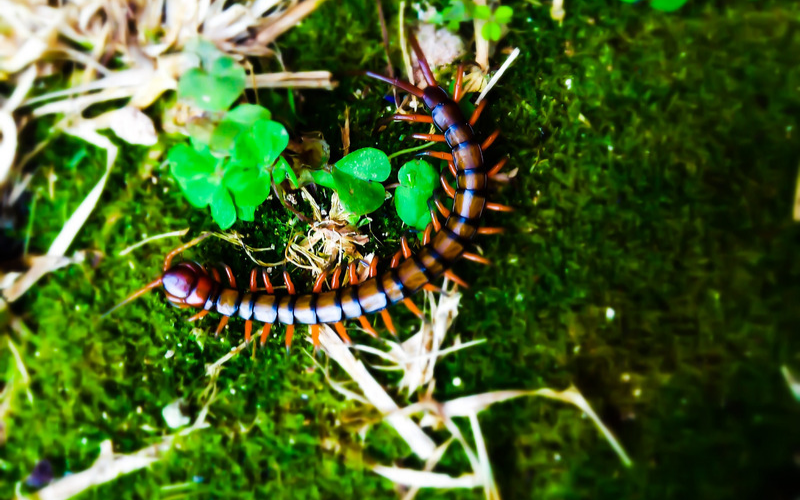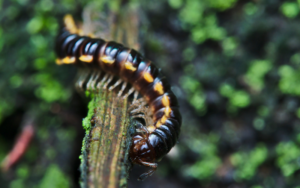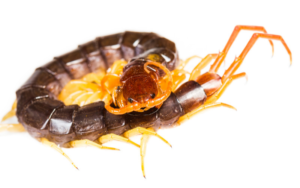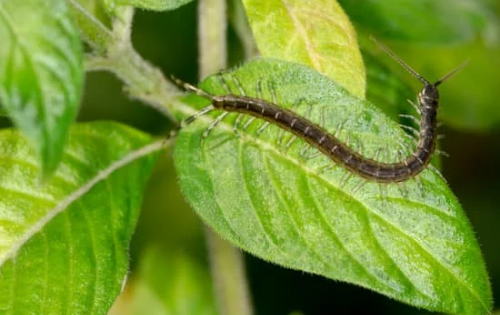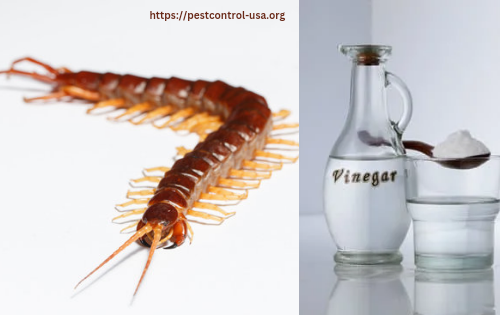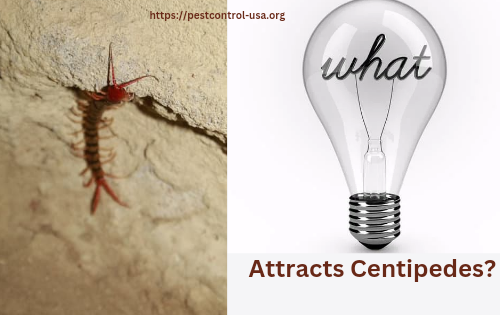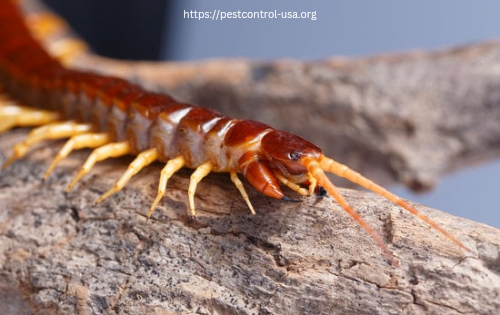Centipedes can be a daunting problem to have in your home. Not only are they creepy-crawly and unappealing to look at, but they can also bite and spread diseases. Therefore it’s important to take steps to rid them from your living space quickly. In this article we will discuss 5 tips for getting rid of Centipedes.
5 Tips for Getting Rid of Centipedes
Here are five tips for getting rid of centipedes in your home that will help you keep your home pest free and sanitary.
Tip #1: Identify The Type of Centipede in Your Home
Certainly! Identifying the type of centipede in your home can be helpful for a number of reasons. Different species of centipedes may have different habitats, feeding habits, and behaviors, and understanding these differences can help you tailor your pest control efforts to be more effective.
For example, house centipedes are commonly found in homes and are often attracted to damp, dark areas like basements and crawl spaces. They feed on other pests like insects and spiders, so if you have a problem with these types of pests in your home, eliminating them may also help to control the house centipede population. Scutigera centipedes, on the other hand, are usually found in more temperate climates and prefer to live outdoors. They may accidentally make their way into homes through open doors or windows, but they are not as well adapted to living inside as house centipedes.
By understanding the specific type of centipede in your home, you can choose pest control methods that are most likely to be effective for that particular species. For example, you may use a combination of physical removal and chemical control for house centipedes, while focusing on sealing up any entry points and using natural repellents for scutigera centipedes. This targeted approach can be more effective than a one-size-fits-all approach, and can help you get rid of centipedes more quickly and effectively.
Tip #2: Look for Centipedes
Where to Look for Centipedes in Your Home
Centipedes are often attracted to damp, dark environments, so if you are trying to get rid of centipedes in your home, it is a good idea to focus your search in these types of areas. Some common places where you might find centipedes include:
-
Basements: Centipedes are often attracted to damp, cool basements, and may hide in cracks or crevices in the walls or floors.
-
Crawl spaces: Similar to basements, crawl spaces can provide a moist, dark environment that is attractive to centipedes.
-
Bathrooms: Centipedes may be attracted to the dampness of a bathroom, especially if it is not well ventilated.
By regularly checking these areas and looking for signs of centipedes, you can identify any potential infestations and take steps to get rid of the pests.
Sealing Cracks and Openings to Prevent Centipedes from Entering Your Home
In addition to looking for centipedes in damp, dark areas, it is also important to take steps to prevent them from entering your home in the first place. One way to do this is by sealing any cracks or openings that centipedes could use to get inside. This might include sealing gaps around windows, doors, pipes, and other potential entry points.
By sealing these openings, you can help to prevent centipedes from entering your home and establish a barrier that will make it more difficult for them to get inside. This can be an effective preventative measure, especially if you live in an area with a high population of centipedes.
Tip #3: Use a Combination of Physical Removal and Chemical Control
Physical Removal Methods for Getting Rid of Centipedes
Physical removal methods involve using a tool or device to physically remove centipedes from your home. Some common physical removal methods include:
- Vacuuming: A vacuum can be an effective way to quickly and easily remove centipedes from your home. Simply run the vacuum over any areas where you have seen centipedes, and the pests will be sucked up into the bag or canister. Be sure to dispose of the bag or canister immediately to prevent any surviving centipedes from crawling back out.
- Sticky traps: Sticky traps are pieces of paper or cardboard coated with a sticky substance that can be placed in areas where you have seen centipedes. When the centipedes crawl over the trap, they will become stuck to the surface and can be easily disposed of.
- Picking up centipedes with a tool: If you are comfortable handling centipedes, you can use a tool like a pair of tweezers or a spoon to pick up the pests and dispose of them. Be sure to wash your hands thoroughly after handling centipedes to avoid any potential bites.
Chemical Control Options for Getting Rid of Centipedes
In addition to physical removal methods, chemical control options can also be effective at getting rid of centipedes. These methods involve using chemicals like insecticides or pesticides to kill the pests. Some common chemical control options include:
- Insecticides: Insecticides are chemicals that are specifically formulated to kill insects. There are many different types of insecticides available, and some are more effective at killing centipedes than others. Be sure to read the label carefully and choose an insecticide that is specifically designed to kill centipedes.
- Pesticides: Pesticides are chemicals that are used to control pests. Like insecticides, there are many different types of pesticides available, and some are more effective at killing centipedes than others. Be sure to read the label carefully and choose a pesticide that is specifically designed to kill centipedes.
It is important to follow the instructions on the label carefully when using chemical control methods, and to use caution to avoid exposing yourself or others to the chemicals.
Tip #4: Try Natural Solutions to Deter Centipedes
Natural Solutions for Deterring Centipedes
If you prefer to use natural or organic methods to get rid of centipedes, there are several options you can try. Some natural solutions for deterring centipedes include:
- Essential oils: Essential oils like peppermint and citrus can be effective at repelling centipedes. To use essential oils as a natural deterrent, you can dilute a few drops of the oil in water and spray it around the perimeter of your home or in areas where you have seen centipedes. The strong scent of the oils can help to deter the pests.
- Diatomaceous earth: Diatomaceous earth is a natural substance made from the fossilized remains of tiny aquatic organisms called diatoms. It is often used as a natural pest control option because it is safe for humans and pets, but deadly to insects. To use diatomaceous earth to deter centipedes, you can sprinkle it around the perimeter of your home or in areas where you have seen centipedes. The sharp edges of the diatomaceous earth will cut through the exoskeletons of the pests, causing them to dehydrate and die.
- Boric acid: Boric acid is a naturally occurring chemical that is toxic to insects. It can be used as a natural pest control option for centipedes and other pests. To use boric acid to deter centipedes, you can sprinkle it around the perimeter of your home or in areas where you have seen centipedes. The boric acid will cause the pests to dehydrate and die.
It is important to use caution when using natural pest control options, as some of these substances can be toxic if ingested or handled improperly. Be sure to follow the instructions on the label carefully and use caution to avoid exposing yourself or others to the substances.
Tip #5: Take Preventative Measures to Keep Centipedes Out of Your Home
Preventative Measures for Keeping Centipedes Out of Your Home
Preventative measures are steps you can take to help prevent centipedes from entering your home in the first place. Some effective preventative measures include:
- Keeping your home clean and clutter-free: Centipedes are attracted to cluttered areas where they can hide, so keeping your home clean and free of clutter can help to reduce the number of hiding places for these pests.
- Repairing leaks and damp areas: Centipedes are attracted to moist environments, so if you have any leaks or damp areas in your home, it is important to repair them as soon as possible. This will remove the moisture that centipedes need to survive, making your home less attractive to these pests.
- Sealing gaps around doors and windows: Centipedes can crawl through very small openings, so it is important to seal any gaps around doors and windows to prevent them from entering your home. Door sweeps and weatherstripping can be effective at sealing these gaps and creating a barrier to keep centipedes out.
By taking these preventative measures, you can help to reduce the risk of centipedes entering your home and establish a barrier that will make it more difficult for them to get inside. This can be an effective way to help prevent infestations and keep your home centipede-free.
Conclusion
In conclusion, getting rid of centipedes in your home can be a challenging task, but it is important to take steps to control these pests in order to keep your home healthy and comfortable. Some key tips for getting rid of centipedes include:
- Identifying the type of centipede in your home to tailor your pest control efforts.
- Looking for centipedes in damp, dark areas and sealing any cracks or openings to prevent them from entering your home.
- Using a combination of physical removal methods like vacuuming or sticky traps, and chemical control options like insecticides and pesticides.
- Trying natural solutions like essential oils, diatomaceous earth, and boric acid to deter centipedes.
- Taking preventative measures like keeping your home clean and clutter-free, repairing leaks and damp areas, and sealing gaps around doors and windows to keep centipedes out.
By using a combination of these methods and being vigilant about checking for and removing centipedes from your home, you can effectively get rid of these pests and keep them from returning.

